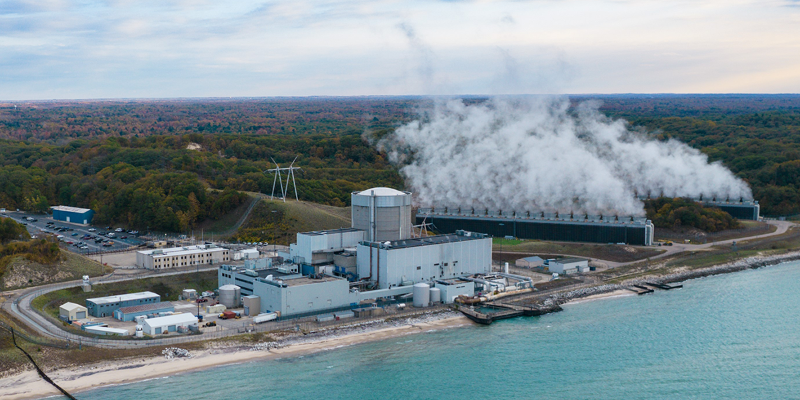Watt’s the Big Fission? The Resurgence of Nuclear Energy

From electric cooperatives to tech giants, nuclear energy is witnessing a comeback after nearly a decade with no new activity. Over the last year, there have been major nuclear energy announcements, from recommissioning power plants to purchasing deals by hyper-scalers like Meta, Google and Microsoft.
The nuclear comeback has already impacted cooperatives. With U.S. Department of Energy (DOE) financing, Holtec International is restarting the Palisades Power Plant in Michigan with Wolverine Power Cooperative and Hoosier Energy as the main offtake customers. In addition, Constellation Energy is restarting Three Mile Island Unit 1 in Pennsylvania with an offtake agreement from Microsoft to power its data centers.
“The rise of artificial intelligence and need for stronger computing power and data centers has led technology firms to pursue reliable and carbon-free electricity from nuclear power,” CFC Senior Energy Industry Analyst Alisha Pinto said. “The main players in the tech and data center world—Meta, Google, Amazon, Equinix and Oracle—are signing letters of intent and investing in advanced nuclear reactors and small modular reactors (SMRs) from developers such as Oklo and Kairos Power.”
Across the U.S., there are 54 commercially operating nuclear power plants in 28 states with a total of 94 reactors. Nuclear energy accounts for more than 18% of the U.S. electricity generation mix. The latest reactor to come online was the Vogtle Unit 4 in Georgia, serving electric cooperative members through Oglethorpe Power.
“Nuclear energy is viewed as a stable and reliable source that provides almost 24-hour electricity,” Pinto said. “The capacity factor, i.e. the utilization rate, is very high at 92.3%. In comparison, the capacity factor of natural gas plants is about 55%, while wind and solar are between 25% to 35%.”
The fuel supply chain is a key part of the puzzle in the expansion and resurgence of nuclear energy. The U.S. has mining and production operations for uranium in the western parts of the country. Of the five production facilities that are running, three are in Wyoming and two are in Texas. However, most of the uranium used in the U.S. is imported from other countries.
“Limited domestic production capacity has resulted in the U.S. importing 99% of the uranium needed to fuel its nuclear power plants,” Pinto said. “In 2023, the main trading partners for uranium were Canada, Australia, Russia, Kazakhstan and Uzbekistan.”
After Russia invaded Ukraine, the U.S. banned Russian imports of uranium in August 2024, although companies are allowed to apply for waivers through 2028. With investments from tech companies and DOE funding, domestic production is getting a boost.
“Most recently, Uranium Energy Corporation and Radiant Energy announced an agreement to collaborate on enhancing the nuclear fuel value chain,” Pinto said. “Securing the domestic supply chain will support U.S. energy security needs.”
The policy landscape will also help to shape the future of nuclear energy. Both the Infrastructure Investment and Jobs Act and the Inflation Reduction Act (IRA) provided financing for nuclear technology and supply chain development. Under the IRA, which is currently under review, DOE is expected to finalize contracts with 10 companies to enhance domestic uranium production. Additionally, the Trump administration announced funding for the deployment of SMRs.
“The main challenges to deploying new nuclear energy are the high investment costs and the long timelines for approvals, construction and commercial operation,” Pinto said. “Long-term growth in the sector will be determined by how quickly and efficiently it can develop and meet new electricity demands.”
